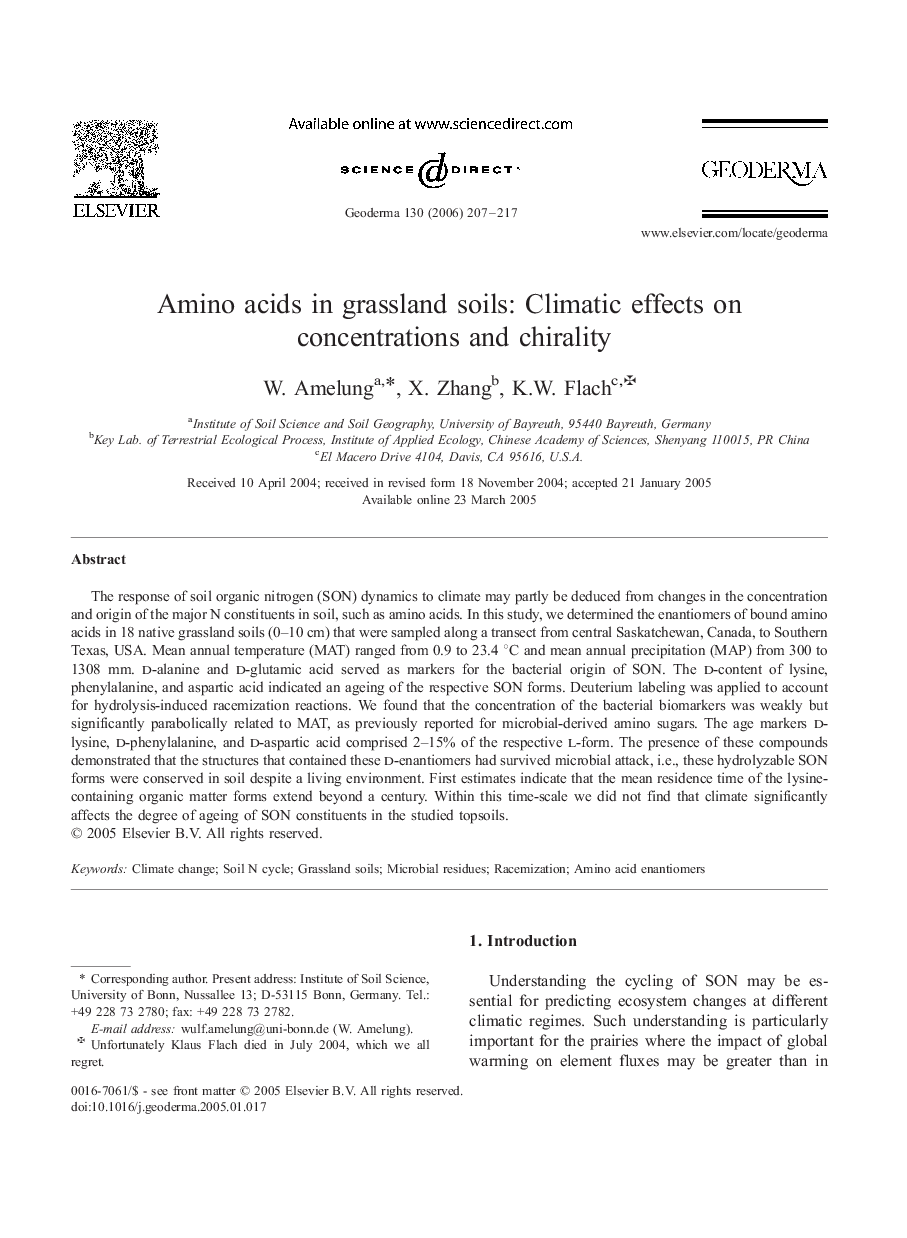| کد مقاله | کد نشریه | سال انتشار | مقاله انگلیسی | نسخه تمام متن |
|---|---|---|---|---|
| 4575741 | 1629571 | 2006 | 11 صفحه PDF | دانلود رایگان |

The response of soil organic nitrogen (SON) dynamics to climate may partly be deduced from changes in the concentration and origin of the major N constituents in soil, such as amino acids. In this study, we determined the enantiomers of bound amino acids in 18 native grassland soils (0–10 cm) that were sampled along a transect from central Saskatchewan, Canada, to Southern Texas, USA. Mean annual temperature (MAT) ranged from 0.9 to 23.4 °C and mean annual precipitation (MAP) from 300 to 1308 mm. d-alanine and d-glutamic acid served as markers for the bacterial origin of SON. The d-content of lysine, phenylalanine, and aspartic acid indicated an ageing of the respective SON forms. Deuterium labeling was applied to account for hydrolysis-induced racemization reactions. We found that the concentration of the bacterial biomarkers was weakly but significantly parabolically related to MAT, as previously reported for microbial-derived amino sugars. The age markers d-lysine, d-phenylalanine, and d-aspartic acid comprised 2–15% of the respective l-form. The presence of these compounds demonstrated that the structures that contained these d-enantiomers had survived microbial attack, i.e., these hydrolyzable SON forms were conserved in soil despite a living environment. First estimates indicate that the mean residence time of the lysine-containing organic matter forms extend beyond a century. Within this time-scale we did not find that climate significantly affects the degree of ageing of SON constituents in the studied topsoils.
Journal: Geoderma - Volume 130, Issues 3–4, February 2006, Pages 207–217